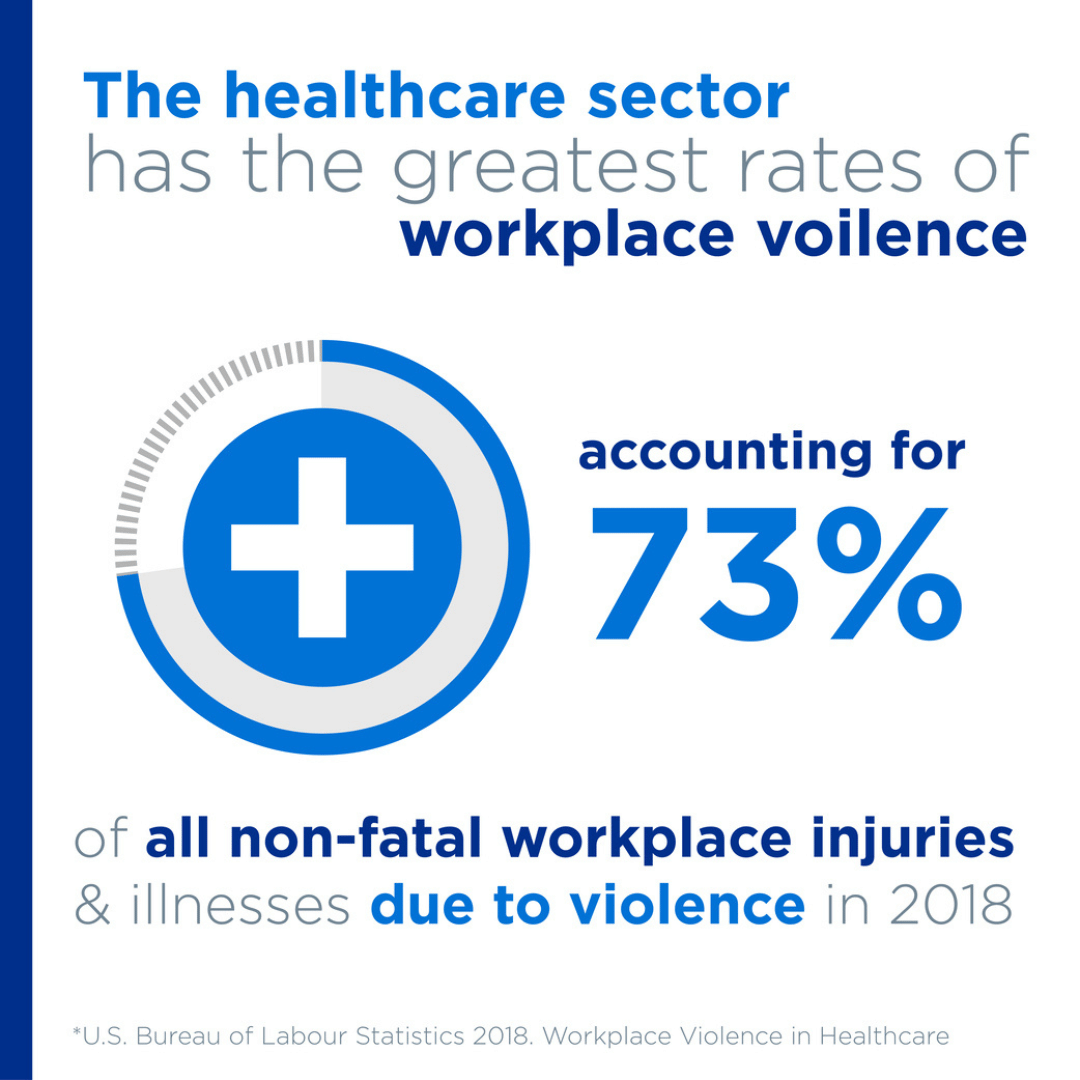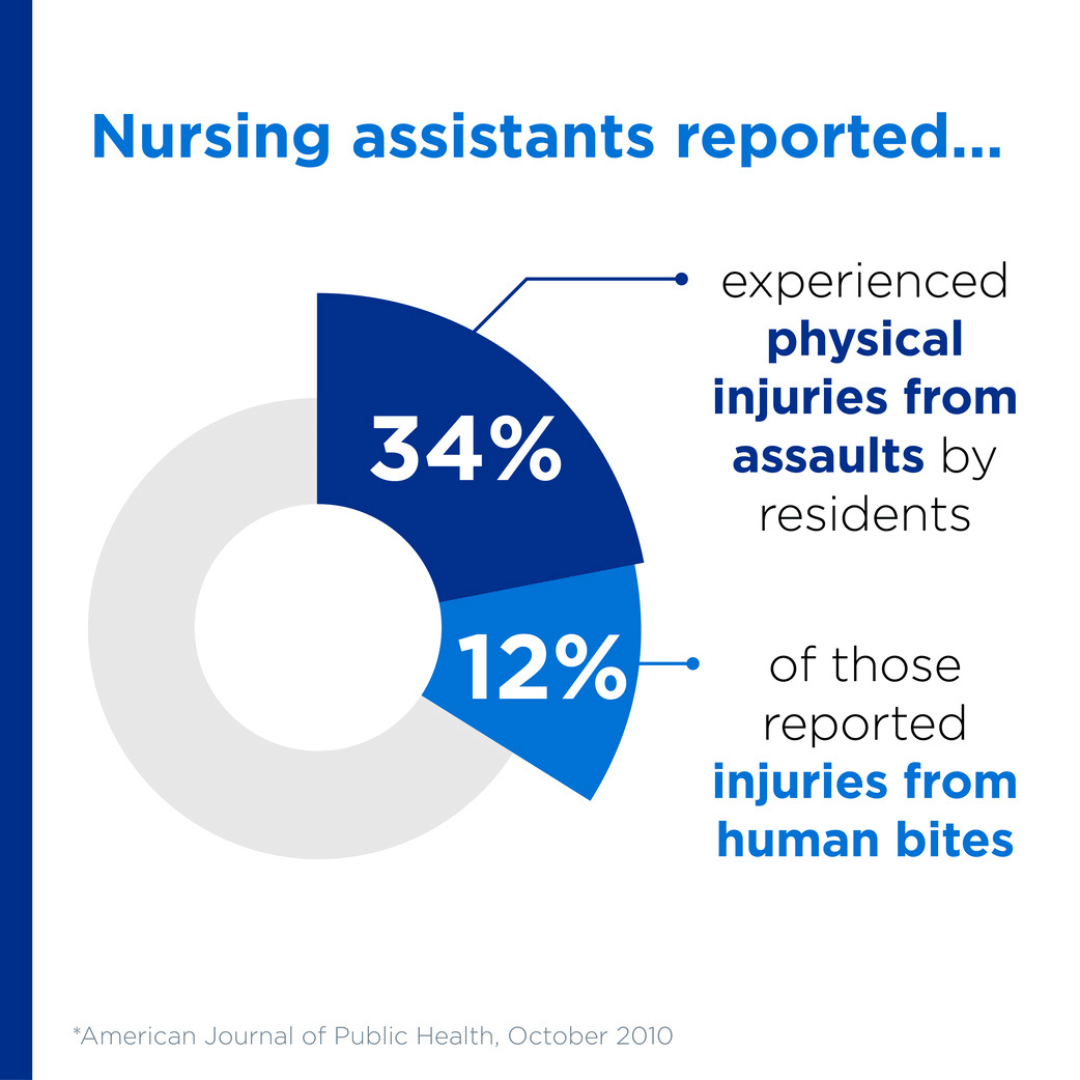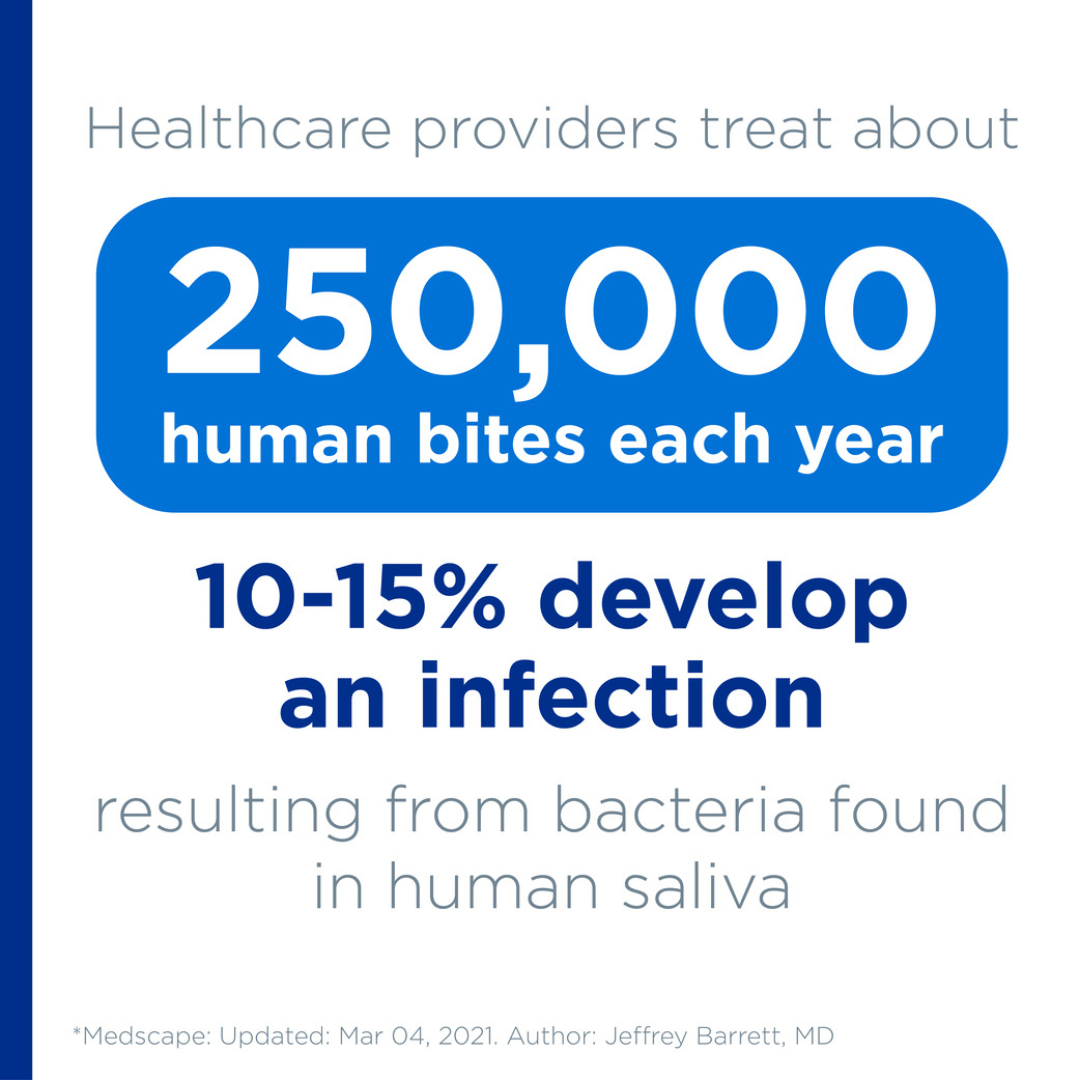Human bites used as a weapon in assaults against healthcare professionals are a growing concern. They form part of the many disturbing workplace violence statistics that have made national headlines in recent years, in countries around the world.
Although violence in the workplace affects almost all sectors, it has become evident that the healthcare sector has the greatest rates of workplace violence injuries, with healthcare professionals being five times more likely to be assaulted and injured than others. They accounted for 73% of all nonfatal workplace injuries and illnesses due to violence in 2018. (U.S. Bureau of Labour Statistics 2018. Workplace Violence in Healthcare)

Most healthcare professionals either have been bitten by another human being once or multiple times in their career, or they know of a co-worker who has been bitten.
The wounds are usually located on hands, arms, neck, torso, and face.
During a survey, a total of 34% of nursing assistants reported experiencing physical injuries from assaults by residents during the previous year. This included 12% who reported injuries from human bites.’ (American Journal of Public Health, October 2010)

50% of assaults on nursing staff resulted in injuries requiring medical treatment beyond first aid, time off or financial compensation. The majority of the reported injuries (86.4%) resulted from direct patient contact. Common patient behaviours that led to intentional injuries were: hitting/kicking (25.0%), biting (13.6%). (Minnesota Department of Health, September 2008)
The potential risks associated to human bites
The potential physical and psychological consequences of human bites should not be ignored.
Human bites have been shown to transmit hepatitis B, hepatitis C, herpes simplex virus (HSV) syphilis, tuberculosis, actinomycosis, and tetanus. Evidence suggests, also unlikely, but possible transmission of the human immunodeficiency virus (HIV).
It is important to understand that there can be complications if the injured person doesn’t get to the emergency room quickly enough because the infection can spread rapidly. Even a seemingly minor bite injury can damage underlying joints, tendons or bones, or lead to a serious infection.
These infections might cause permanent damage to the affected part of the body unless they are treated quickly. Infections associated with human bites are often far advanced by the time they receive appropriate care. Sadly, patients often wait until the infection is well established before seeking medical treatment.
Human bite wounds can occasionally be more dangerous than one would expect. The bacterial inoculum of human bite wounds contains as many as 100 million organisms per millilitre and is made up of as many as 190 different species. (Medscape: Updated: Mar 04, 2021. Author: Jeffrey Barrett, MD)
Human bites may transmit bloodborne pathogens (BPs) by exposing the biter’s oral mucosa to the bitee’s blood and the bite wound to biter’s saliva.
A particularly bad bite-borne pathogen is the bacterium Capnocytophaga canimorsus. In human tissue, the pathogen releases a substance that inactivates a certain type of white blood cell (neutrophil). These usually eat bacteria or eliminate microbial debris. Serious infections up to generalized blood poisoning can be the result.
Healthcare providers treat about 250,000 human bites each year. 10-15% develop an infection resulting from bacteria found in human saliva. (Medscape: Updated: Mar 04, 2021. Author: Jeffrey Barrett, MD)

A nurse speaks up about assault
On 27 October 2017, the Australian newspaper ‘THE AGE’ featured the very intimate story of mental health care nurse Jess Anderson:
“It's a Thursday night in a psychiatric unit in Melbourne and Jess Anderson is being bitten by one of her patients. The woman has latched onto her forearm with her top and bottom teeth and is pulling as hard as she can. Jess would not notice her own injury until hours later.”
"I didn't realise what had happened until the end of my shift when I thought 'Jeez my arm is a bit painful', I rolled back my sleeve of my jumper to have a look and a bit of skin fell off my arm." she said.
The bite injury required several stitched and left a visible scar. She has also been bitten on four additional separate occasions.
Mitigating the risk
Since human bites can indeed have life-threatening consequences and lead to severe psychological trauma, why is there not more guidance available to healthcare professionals?
Aren’t there more measures to make sure this realistic risk is being mitigated and individuals are adequately protected?
As stated earlier, many professionals have been bitten by another human being at some point in their career, or they know of someone who has been bitten. This means their employer will already have identified a realistic operational risk to the employee’s safety and well-being. In most countries in the civilised world that means such risk must be addressed and the risk must be mitigated. Most likely this risk mitigation process will include training, and it might conclude that some type of protective workwear must be identified and issued to the worker.
Today’s work environments will require a risk assessment to be conducted, highlighting any realistic risk employees are being exposed to, for example the risk of being bitten. The purpose of such risk assessment is to identify very clearly a) the precise and realistic risk, b) the potential liability and c) the implementation of effective mitigating measures.
Conducting a risk assessment and taking all necessary action to mitigate the highlighted risks would significantly improve the safety of such workplace. Appropriate conflict management training and risk specific protective clothing should be made available wherever the risk of biting has been identified, either by behavioural tendencies, the history of a patient or service user, or previous incidents in a specific work environment.
About the Author
Robert Kaiser is the Founder and CEO of BitePRO® Bite Resistant Clothing, the world's first specialised brand of protective clothing, offering dependable scratch and bite protection for healthcare workers, education professionals, and others working with individuals displaying challenging behaviour. Robert is a widely respected expert in workplace violence and violence prevention. His written work has been published in several international industry leading publications.


